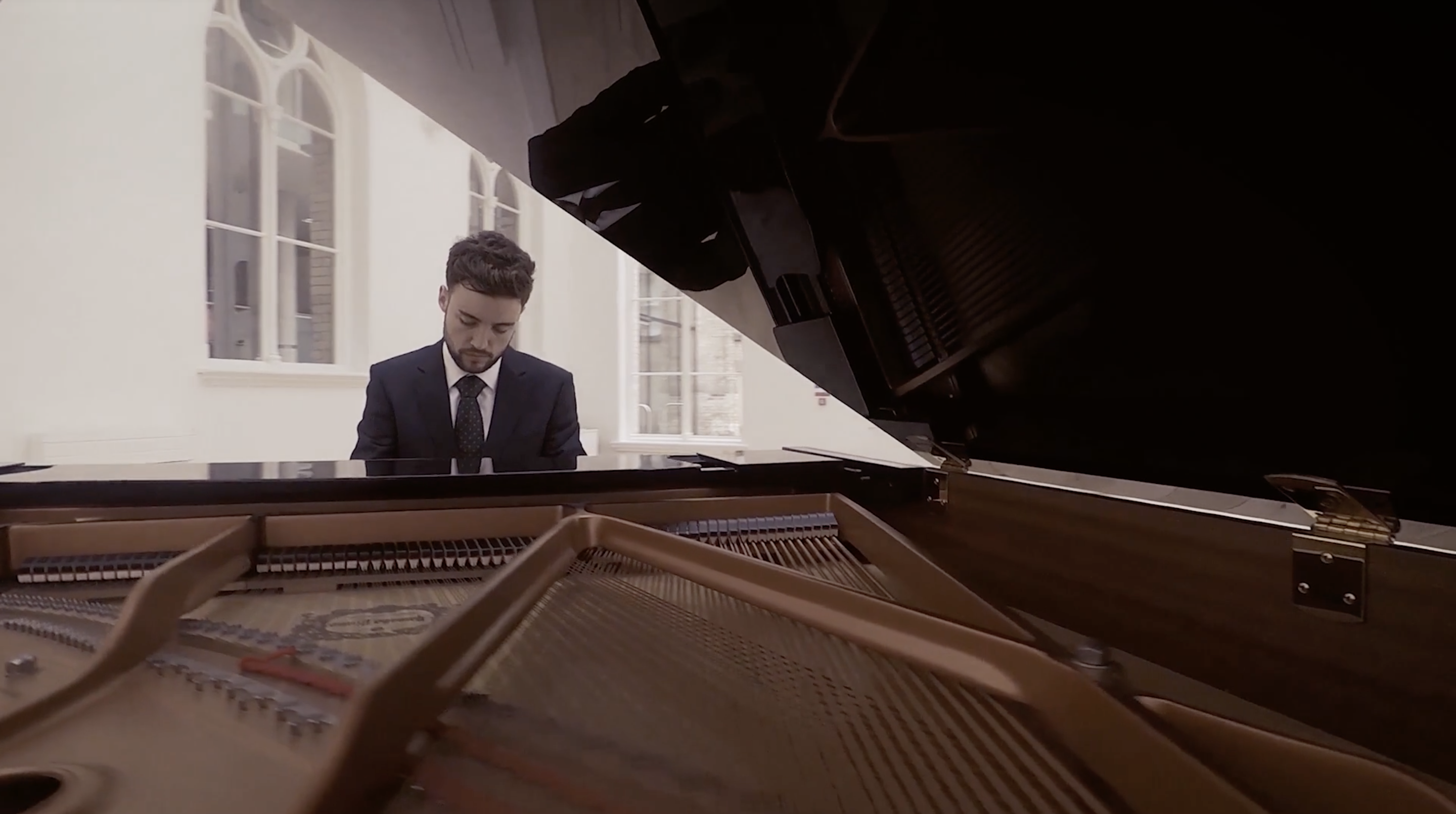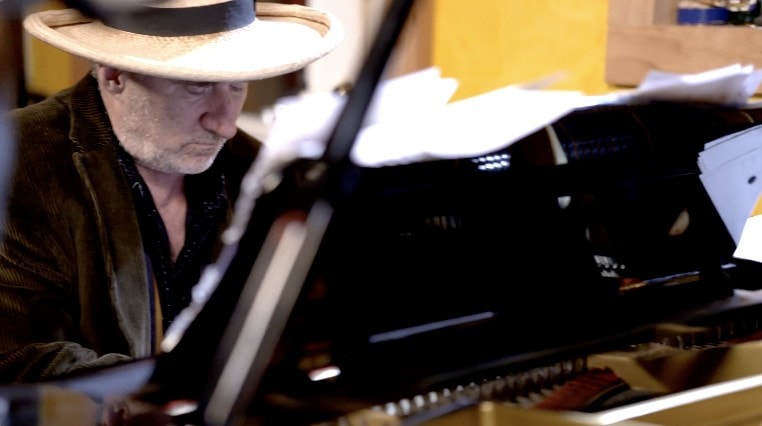
Hayden Hill
Hayden founded PianoGroove in 2015 with the goal of making the world a more musical place. He shares his love for jazz piano through his online courses and manages the community area of PianoGroove.
Live Seminar Resources
Live Seminar Resources
PDF Downloads
- 12 Bar Blus Substitution Options
Join PianoGroove Pro to access all downloads and learning resources.
Download theory supplements, midi files, chord changes and full note-for-note transcriptions of every lesson.
Related Lessons
Forum Threads
Seminar Description
Seminar Description
Slow Blues Piano in C – Essential Techniques & Concepts
Welcome to this lesson on Slow Blues in C, where we explore foundational techniques, voicings, and stylistic nuances to enhance your blues playing. This lesson covers the essential blues form, common keys, voicing techniques, passing chords, and gospel-inspired progressions to give you a well-rounded approach to playing solo blues piano.
The Basics of Blues in C
Blues is deeply rooted in jazz, gospel, and rock traditions, and the key of C is a natural starting point due to its accessibility on the piano. In this lesson, we focus on the 12-bar blues form, which consists of:
- C7 for 4 bars
- F7 for 2 bars
- C7 for 2 bars
- G7 to F7 to C7
- (turnaround)
We discuss playing in keys like C, F, and G, which offer easy access to crushed notes and natural hand positioning for playing 10ths.
Left-Hand Structures: Octaves, Shell Voicings & 10ths
A strong left hand is crucial in blues piano. The three main structures we use are:
- Octaves – These provide a full, resonant bass and allow for "rolling" techniques.
- Shell Voicings – Playing just the root and 7th (or root and 3rd) keeps the harmony simple yet effective.
- 10ths – These are particularly useful in C, F, and G, allowing for a rich, full sound. If your hands can’t stretch a 10th, rolling or alternating between notes is a great alternative.
Adding Depth with 9th & 13th Voicings
Blues voicings often go beyond basic 7th chords. Adding the 9th (C9, F9, G9) creates a richer, jazzier sound. We also introduce rootless voicings, such as playing an A-7b5 shape over F7 to imply a F9.
Another technique involves using 13th voicings for a more dominant blues feel, although using 13th chords for the 1, 4, and 5 chords can sometimes sound too complex for traditional slow blues.
Feeling the Slow Blues Pulse
The characteristic triplet feel of slow blues creates a laid-back groove. Instead of playing straight quarter-note rhythms, blues is felt in 12/8:
"1-and-a, 2-and-a, 3-and-a, 4-and-a"
A simple left-hand bass pattern, moving between root-5th-6th-7th, helps internalize this swing feel. Practicing this groove is essential before adding more complex right-hand improvisation.
Essential Blues Fills & Passing Chords
1. Triadic Passing Chords
- Moving from C7 to F7, we can pass through Gb7 as a chromatic approach chord.
- From G7 to C7, we can precede G7 with Ab7 for a strong resolution.
2. Descending 4th Chords
- Dropping from C7 to C6 by lowering the 7th can add movement.
- Similarly, for F7, lowering the 7th creates a smooth passing motion.
3. Diminished Substitutions
- F# diminished (F#dim7) can substitute for F7, adding tension before resolving.
- Diminished passing chords work beautifully in blues, especially when moving between dominant 7th chords.
Walkups & Walkdowns
1. Walkup to F7
Instead of jumping directly from C7 to F7, we use a chromatic walkup:
- C → Dm7 → Ebdim7 → C/E → F7
2. Walkdown to G7
Descending into G7 can be made smoother with:
- A7 → Ab7 → G7
These techniques create forward motion and give your blues playing a more professional feel.
Gospel-Influenced Blues Progressions
Blues and gospel share a close connection. One powerful progression borrows from gospel harmony:
- Instead of staying on C7 in bar 6, we substitute E7 → A7 before moving to D7 → G7.
- This progression adds color and evokes the sound of church music, which is deeply tied to blues history.
Practice Tips
- Master the 12/8 Groove – Before adding fills and variations, ensure you can maintain a steady triplet feel in your left hand.
- Learn Chord Shapes in All Positions – Visualize C7, F7, and G7 across different registers to increase flexibility.
- Use Passing Chords Tastefully – Add chromatic passing chords sparingly to maintain the blues feel.
- Experiment with 9ths & 10ths – Substituting standard 7th chords with 9th voicings can add sophistication.
- Listen to Great Players – Check out pianists like James Booker, Dr. John, and Ray Charles to absorb authentic blues phrasing and voicings.
By internalizing these concepts, you’ll develop a deeper understanding of slow blues piano and gain the ability to add your own stylistic flair. Happy practicing!








Welcome…thanks for the seminar, Hayden! Good to see you!
Hey Scott 👋
Nice to hear from you.
I have just added the chapter markings to the seminar to better navigate the contents.
I also added blue highlights to the notation throughout the video.
Talk soon!
Hayden
Hi Hayden. Working my way through this seminar. It’s ifun, but a bit of a struggle for me. It would be very helpful if you could add a pdf in the key of C which parallels page 2 of the Suspended Trial Fills pdf (in F) from the Slow Blues Beginners course. Thanks in advance.
I think I worked it out. Just took a while.
Hey Wendy 👋
I hope you’re well!
Yes I will ensure all of the notation is created with the course coming shortly, and that it follows the same style as the F Slow Blues PDF files.
It is a good exercise to try to visualise this without notation, although I appreciate it can be a little slow to start with. Always think the triad built a 4th up from the root, then put the top note on the bottom to get the second inversion.
We can also visualise it as the top 2 notes moving, for example if we take a C triad in root position (C-E-G) and move the middle note up a half step, and the top note up a full step, we then have C-F-A which is the triad built a 4th up in its second inversion. Repeating this for all 3 chords in the blues could be a nice warm up visualisation drill.
I’m aiming to get the first series of C Blues lessons published this month – more updates to follow!
Talk soon,
Hayden
You have not discussed blues shuffles. Are these shuffles comparable with the style that you are teaching? If they are, will you include a discussion of them? Thanks
Hey Edwin 👋
Yes I will be covering shuffles in the very near future. My plan is to show how to transition from a slow 12/8 blues into a blues shuffle, and vice-versa. The key of C will be perfect to demonstrate this.
I will get the lessons finished and published which you can find in the PDF download on this page, and then I will focus my attention on blues shuffle patterns.
Thanks for the suggestion and talk soon,
Hayden
On the 4 chord in c blues you should be able to play a f major blues pentatonic ( f g Aflat a c and d) not limit it to c minor blues
This way you get the Aflat to a blues sound
and on g chord play a g maj blues pentatonic to get the Bflat to b sound
Do you agree
Hi Lance,
Yes you are absolutely correct.
We can also think in terms of chord tones, for example, R-3-5-6-7 of the F7, add the b3, and then we pretty much have the F major blues scale with the addition of the Eb the b7.
The C minor blues scale over F7 creates a darker, funkier sound with the extra dissonance created by the b9 (Gb).
Using the F major blues scale over F7 creates a happier sound which more closely fits with the F7 chord tones as highlighted above.
Both can be used and so familiarise yourself with both of these ‘sounds’.
My latest course “Blues Substitutions & Improvisation” is currently being edited and uploaded to the website. The course expands upon the contents of this seminar.
I still have a few more lessons to record but the bulk of the course is already recorded and will be available on the website soon. Keep an eye in the community area for updates.
Talk soon,
Hayden
I’m working my way through this seminar now. when I download the pdf substitution document I can’t open it and I get a message that it is corrupted. Not sure if anyone else has this problem. Any chance it can be emailed to me?
Hi Jim,
Thanks for letting me know about this. I have fixed the PDF download link.
I will also send you a copy via email.
Please let me know if I can help further and enjoy the seminar!
Talk soon,
Hayden